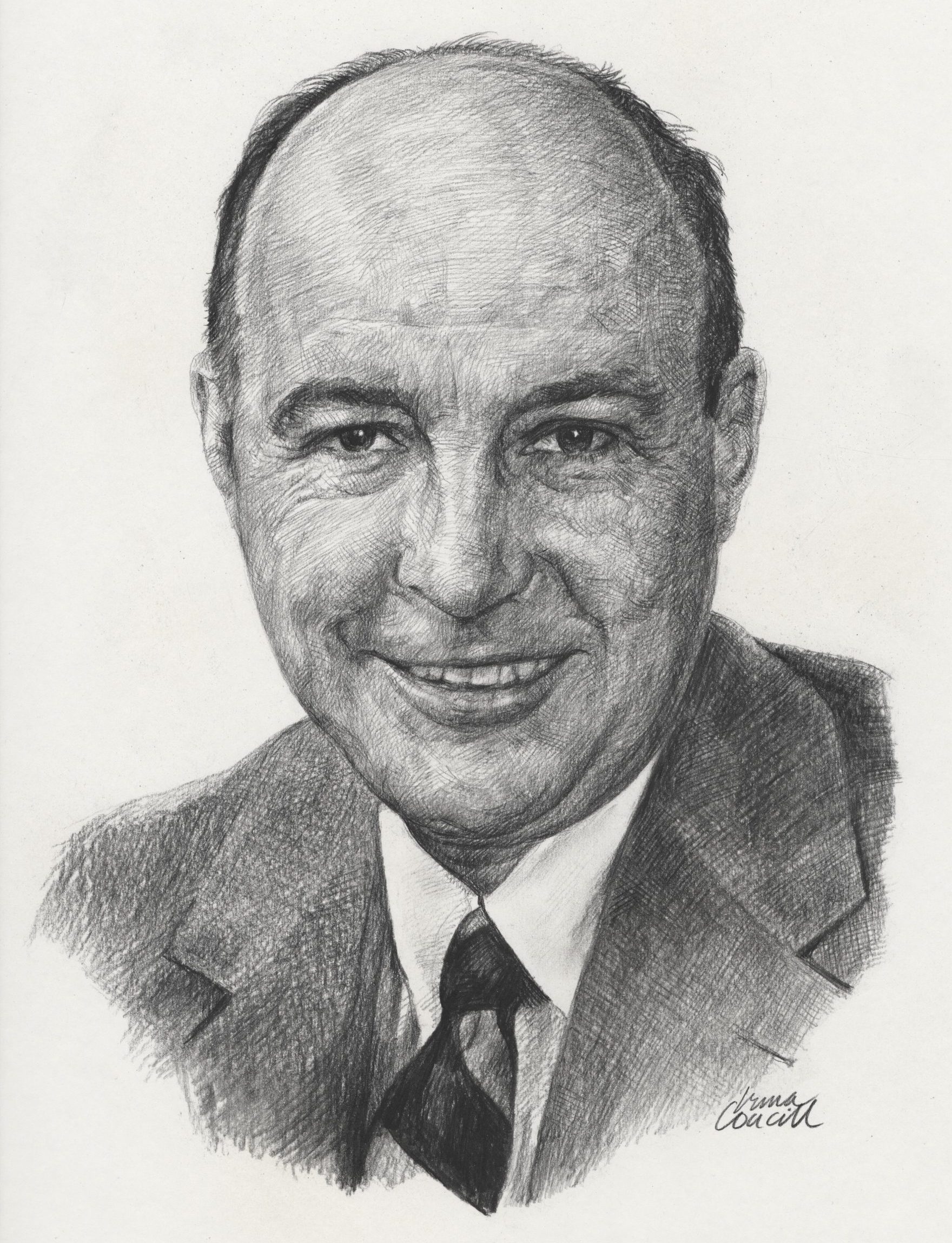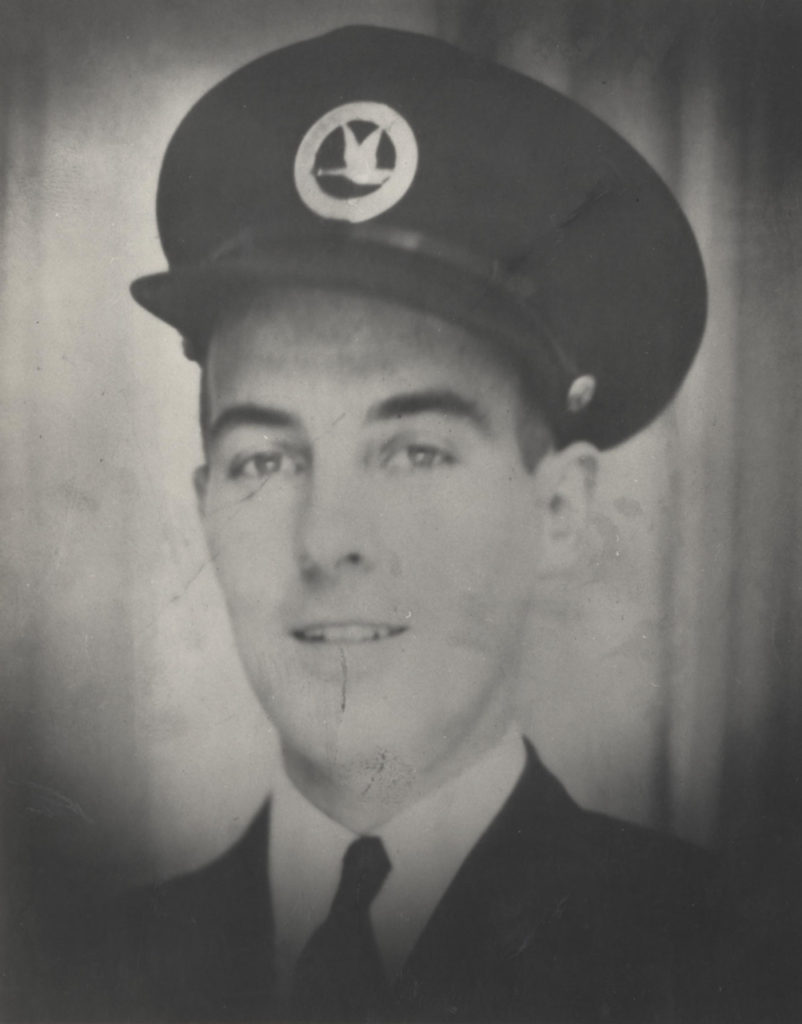Carl Frederick Burke

Birth Date: February 10, 1913
Birth Place: Charlottetown, Prince Edward Island
Death Date: September 7, 1976
Year Inducted: 1982
Awards: MBE; LLD (Hon)
His skills as a pilot, his visionary as a dedicated entrepreneur, his administrative ability which guided the establishment of regional air carriers in the eastern provinces, together with his substantial contributions to the development of northern flying, have been of outstanding benefit to the Nation
A Passion for Flight
Carl Frederick Burke, M.B.E., LL.D. (Hon), was born in Charlottetown, Prince Edward Island, on February 10, 1913, where he received his education.
While working as a hardware clerk in 1936 his desire to fly resulted in frequent journeys to St. John, New Brunswick, to take flying lessons. He obtained his Private Pilot's Licence in July of 1937, and the following year he tied for first place in the Webster Trophy competition while earning his Commercial Pilot's Licence. He purchased a de Havilland 60 Cirrus Moth which was the only privately owned aircraft on Prince Edward Island at the time. In 1939 he qualified for his Air Engineer's Certificate.
The Beginning of a Dream
He accepted a position in May 1939, as a pilot with Canadian Airways Ltd. at Moncton, New Brunswick. At this time, he nurtured ideas of creating a Maritime regional air service, a dream shared by his flying associate, Josiah Anderson.
When Canadian Pacific Air Services acquired Canadian Airways, Burke and Anderson joined the Royal Air Force Ferry Command delivering aircraft to the British Isles. They continued to plan for a Maritime air service and in 1941, a licence was received to operate a scheduled commercial air service which included Charlottetown, Moncton and St. John. Regrettably, Burke had to carry on alone after Anderson lost his life in an airplane crash.
While flying with Canadian Airways Ltd., Burke used a ski-equipped de Havilland Rapide to rescue the pilot of a crashed Lockheed Hudson near Musgrave Harbour, Newfoundland. Killed in the crash were Sir Frederick , co-discoverer of insulin, navigator William Bird, and William Snailman.
The Growth of Maritime Central Airways (MCA)
With the purchase of a Barkley Grow and a Fairchild 24, as well as a leased Boeing 24 7D, Burke's new company, Maritime Central Airways (MCA), operated its first flight on December 7, 1941. While managing the company, Burke captained many of MCA's inaugural flights.
On January 28, 1943, he made five dangerous landings on an ice floe in the Gulf of St. Lawrence to rescue four RAF crewmen and equipment from a downed Avro Anson, incurring considerable risk as it was uncertain that the ice would hold his plane. For this rescue he was named a Member of the Order of the British Empire (M.B.E., Civil).
By the end of World War II, MCA's fleet and areas serviced had greatly expanded. With the inevitable post-war slump, Burke became involved in a variety of income-producing alternatives to keep the company viable, such as seal surveys, lobster charters, and ice patrols for the federal Department of Transport, as well as forestry patrols for the Government of New Brunswick. A subsidiary company, Maritime Central Aircraft Maintenance, was formed to undertake the maintenance of C-47 Dakota aircraft at the RCAF Station Summerside, Prince Edward Island.
A Couple Big Contracts
In 1951 MCA won the contract to provide the airlift for the eastern portions of the Pinetree Project, a chain of military radar stations. During three years of involvement, Burke provided the leadership for a successful air lift of over 10,000 tons of equipment and supplies to the eastern Arctic. The project reported some six million air miles (9,650,000 km) flown and over 100,000 passengers transported to the sites.
When Canada and the United States entered into an agreement to construct the Distant Early Warning Line (DEW Line) in November of 1954, MCA was named the prime contractor for the eastern section of the chain of stations. Burke was actively involved in the overall administration of this operation which required the procurement of additional aircraft, spare parts and ground equipment. At its peak periods, the project needed up to 75 aircraft to meet the requirements of the contract.
Company Acquisition
In 1953 MCA acquired an interest in two small Quebec-based operations, Boreal Airways and Mont Laurier Aviation. By November 1956, the two companies became wholly owned subsidiaries of MCA and merged under the name of Nordair Ltd., which experienced a healthy growth. With the purchase of Wheeler Airlines Ltd. in 1960, MCA had an air route structure that stretched from St. John's, Newfoundland, to Windsor, Ontario, and north beyond the Arctic Circle.
During the 1960's MCA acquired trans-Atlantic range aircraft with which the airline entered the overseas passenger and cargo charter business. MCA was sold to Eastern Provincial Airlines in 1963, but Nordair was not included in the sale. In 1967, when 85% of Nordair's shares were sold to J. Tooley of Montreal, Burke continued as a Director and a member of the Executive Committee of the Board.
During his flying career, Burke was certified on 23 types of aircraft and flew a total of 10,922 hours. His community work was recognized in 1968 when Acadia University conferred upon him an Honorary Doctorate of Laws (LL.D.). He died on September 1, 1976, in Boston, Massachusetts.
Carl Frederick Burke was inducted as a Member of Canada's Aviation Hall of Fame in 1982 at a ceremony held in Edmonton, Alberta.
To return to the Inductee Page, please click here.

